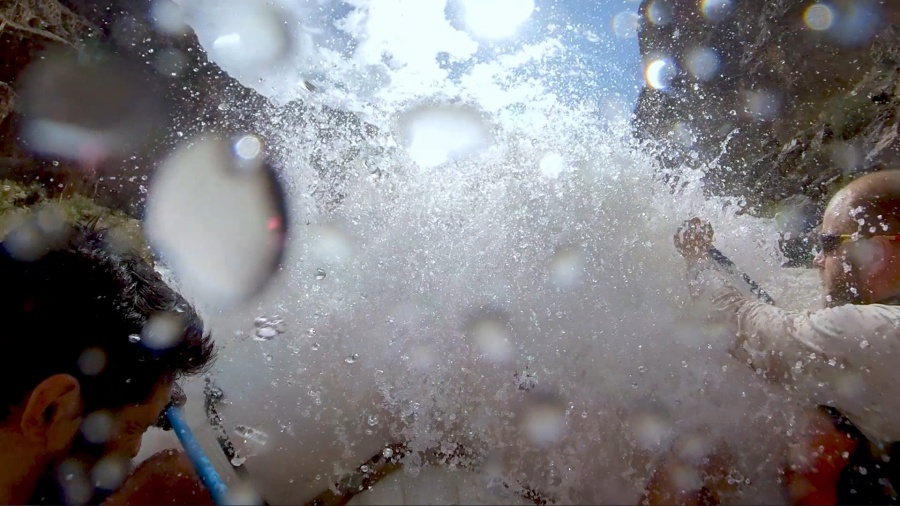
Grand Canyon Whitewater Rafting
“Go! Go hard! Go go go!” Tommy yells over and over. Adrenaline pumping, we paddle like mad dogs to get enough momentum to punch through wave train of Hermit Rapid… and we do! We emerge on the far side, tired but victorious, and watch from an eddy as the other boats go in.
They follow our course… but suddenly there’s a head sticking out of the water. Lora, the guide, leaps to pull the person out, only to let the boat drift sideways into the next wave. The raft flips, and now there’s heads bobbing out of the water all around. “Get ready!” Tommy hollers, “We’re the rescue boat now!”
Watch the video to see how things unfolded from there:
Back in August, I was lucky to take part in an expedition (“big, four-syllable word” as Tommy says) down 226 miles of this wild brown water of the Colorado River, from Lee’s Ferry to Diamond Creek Beach, in 3 paddle rafts and 3 supporting oar rafts, spread out over about two weeks.
The whole river is 1,450 miles long. Its basin was inhabited by Native Americans for at least 8,000 years, but it was a big blank spot on the map until 1869, when John Wesley Powell, a one-armed civil war veteran, led 9 men in three tiny boats into it.

Today the river is dammed in many places, and excessive water use has dried up the lower 100 miles or so of the river, so that it has rarely reached the sea since the 1960s, as Chris McCandless memorably discovered in Into the Wild. But that’s not where we were.
Our expedition was lead by Tommy, who is precisely what you get when you take a California surfer dude and drop him on a river. The BBC called him “chilled out”.
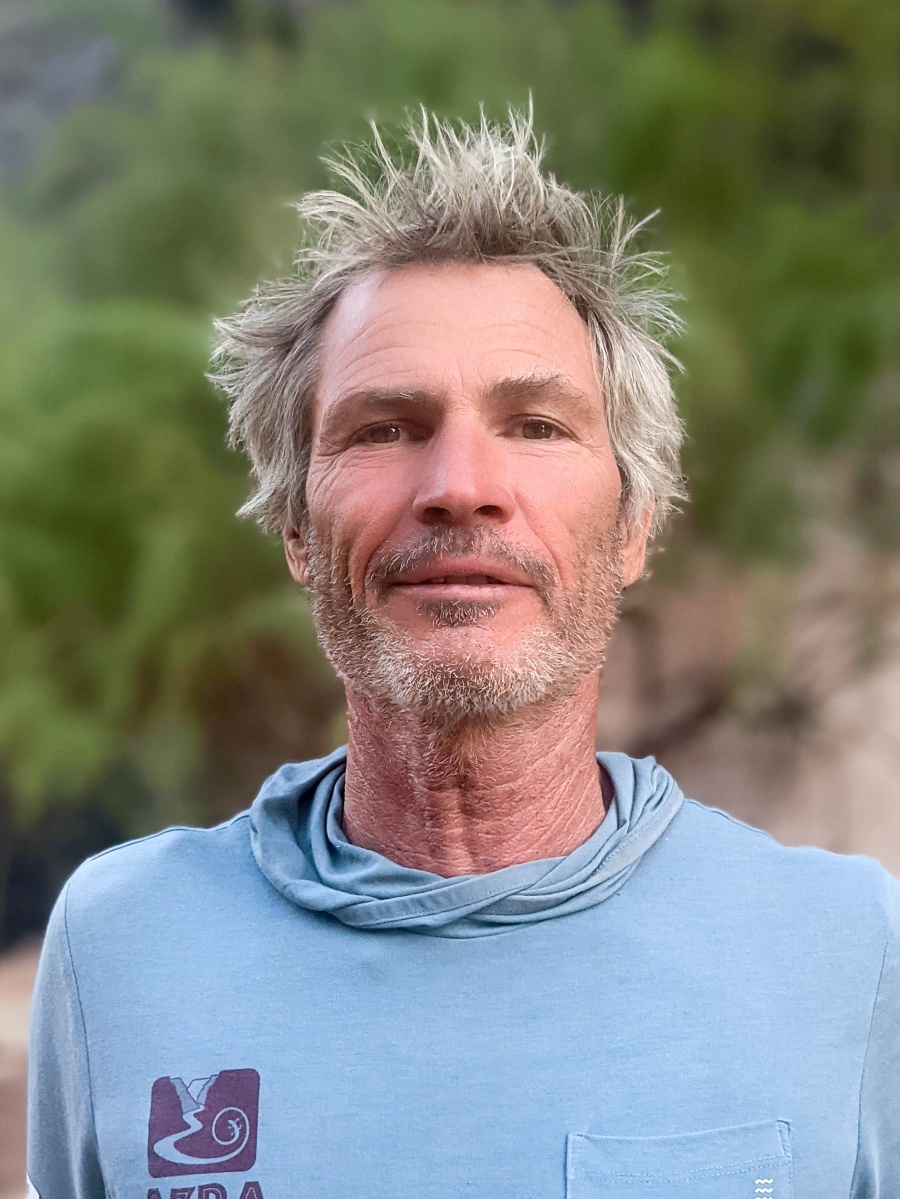
Tommy vibes things - the river, the weather, people. It’s an extra sense, inaccessible to mere mortals, through which Tommy taps into the language of the universe, learning of things yet to come. If Tommy can’t vibe something quite yet, he meditates on it, channeling the ethereal flux until a glimpse of truth manifests itself in his mind. Were Tommy to cultivate this sense for the stock market, he’d be a billionaire in a year.

Tommy would take us to mindsnaps - experiences that pull you in and snap you of your train of thought and into themselves, and in some way surprise you and change your perspective.
Mindsnap! Check out the BBC’s Operation Grand Canyon with Dan Snow. It’s a beautifully made documentary of an expedition down the Colorado, recreating Major John Wesley Powell’s pioneering first expedition down the river in three rickety wooden boats. You can watch it in many places online, including here. You’ll see a lot more of the canyon there… as well as Tommy.
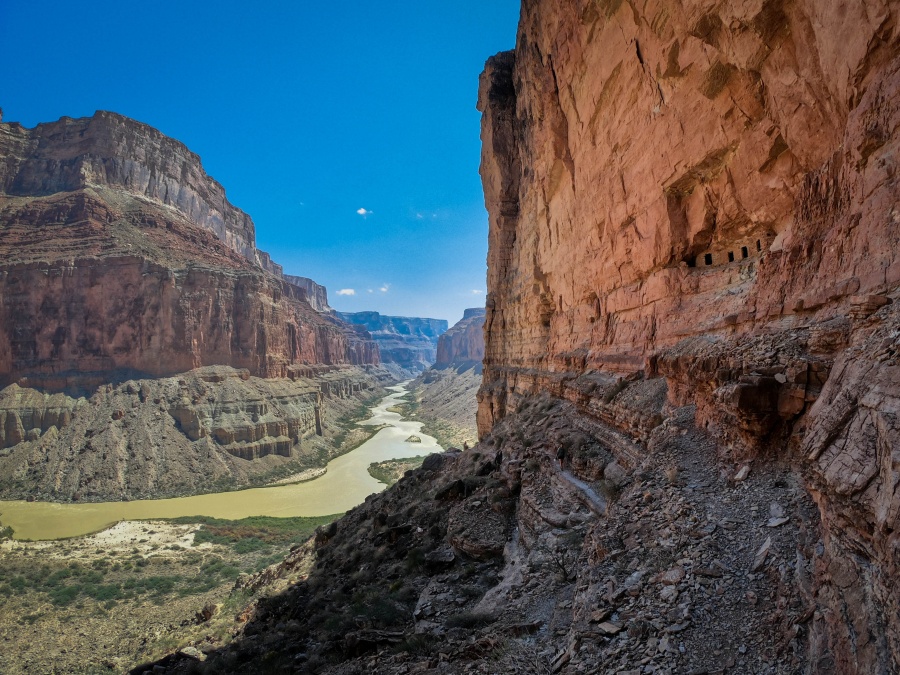
The scale of the canyon overwhelmed me all over again - just day after day after day of going downstream. I guess that’s literally the dimension perpendicular to the grand impression you get when looking at the canyon from a good spot on the rim.
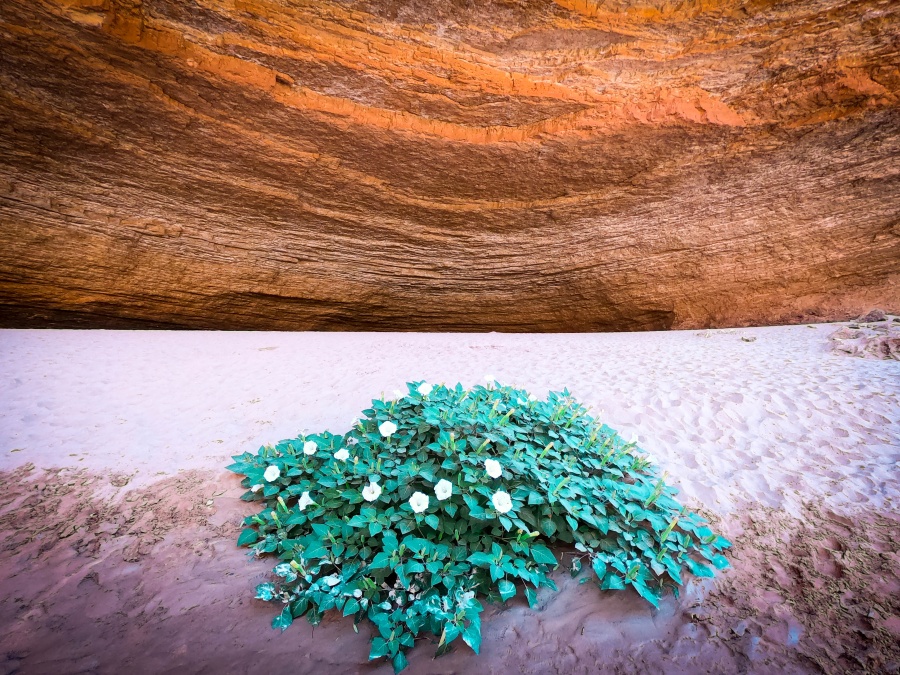
The river water is red with sediment, cool at 52 degrees Fahrenheit. The air temperature was generally warm. This has yields to an endless cycle of being hot and cold - hot in the sun, then wet and cold going through rapids, then hot again.
The river rapids were one exciting feature of the trip. Here’s a still from The Kahuna Wave in Lava Falls Rapid:

The river can indeed be dangerous, even deadly. We had a few unintentional swimmers, including the aforementioned boat flip in Hermit Rapid, but everyone made it out safe and sound, and our crew did an excellent job staying on top of things.
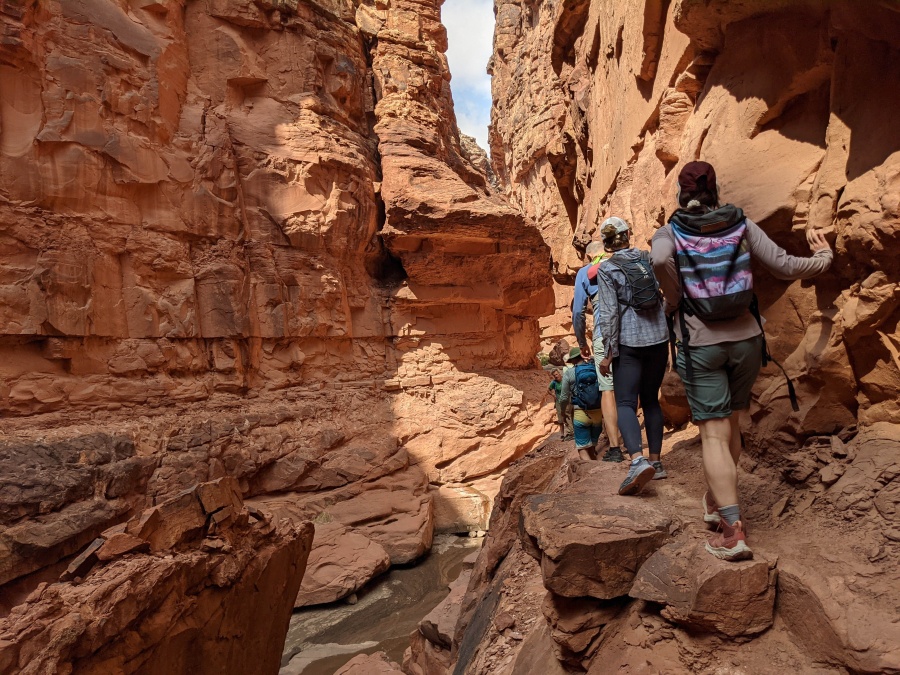
Mindsnap! “Naked Eddie” was a dude who made a deal with some friendly people on the internet to go down the river… and no one else showed up. Eddie pressed on regardless. Tommy would run into him periodically during one of his trips, and Eddie would usually be naked in camp or trying to follow Tommy’s raft through rapids. He made it out! The Grand Canyon history is full of foolhardy people doing foolhardy things. Some make it, and some don’t.
Being on the river does also lead to great hiking opportunities, some of which are difficult or impossible to get to from the canyon’s rim. We walked up narrow slot canyons and found many a waterfall.
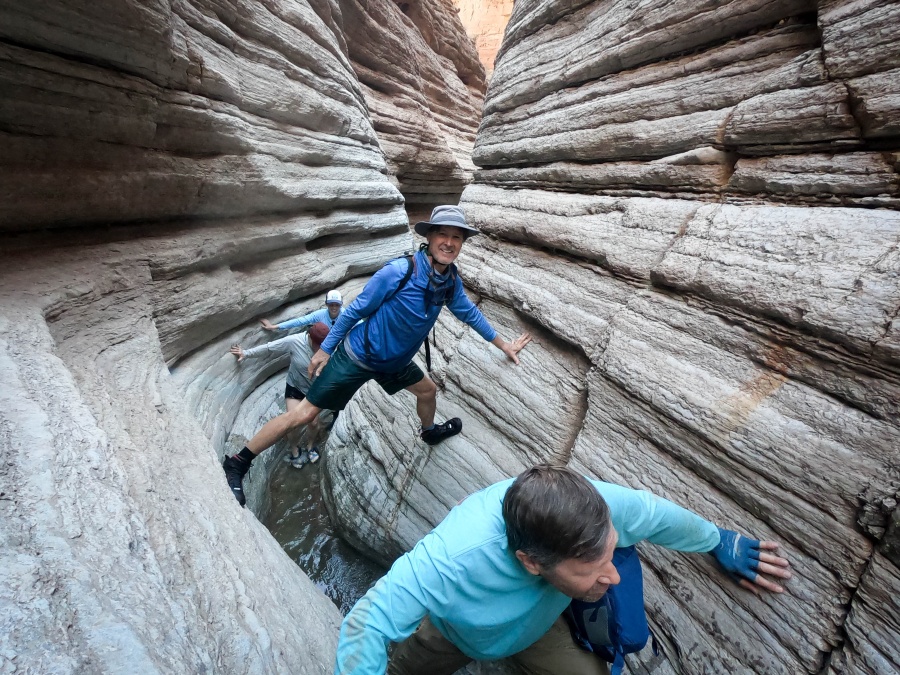
Our days were long. We’d wake up with the coffee call at 5 am. On good days this would take the form of Tommy walking through camp with his guitar, singing an improvised song on the topic of morning coffee.
We’d get on the water between 7 and 8 and be on the river until 4 or 5. Dinner wrapped up around 8, and we might hang out for an hour or two. Sleep was sometimes tricky to find - sometimes because of heat, sometimes because of sandstorms, a few nights because of rain. I only pulled out a tent on three nights, and some hardy souls used it not-a-once. Somehow I think the tent made the sandstorm worse. On hot nights we’d soak a sarong in the river and use it as a blanket to cool off.
And then the wakeup call comes and you do it all over again. Tommy said that we were “going to need a vacation after this vacation,” and he was onto something.
Mindsnap! We Swam the Grand Canyon: The True Story of a Cheap Vacation that Got a Little Out of Hand. In 1955 Bill Beer and John Daggett, at the time both recently out of the military, and in their mid 20s, footloose, and more or less unemployed conceived the idea of swimming the Colorado River through the 279 miles of the Grand Canyon-principally because they couldn’t afford a boat. This simple idea escalated into a national news story and has been one of the legends of the Grand Canyon ever since.
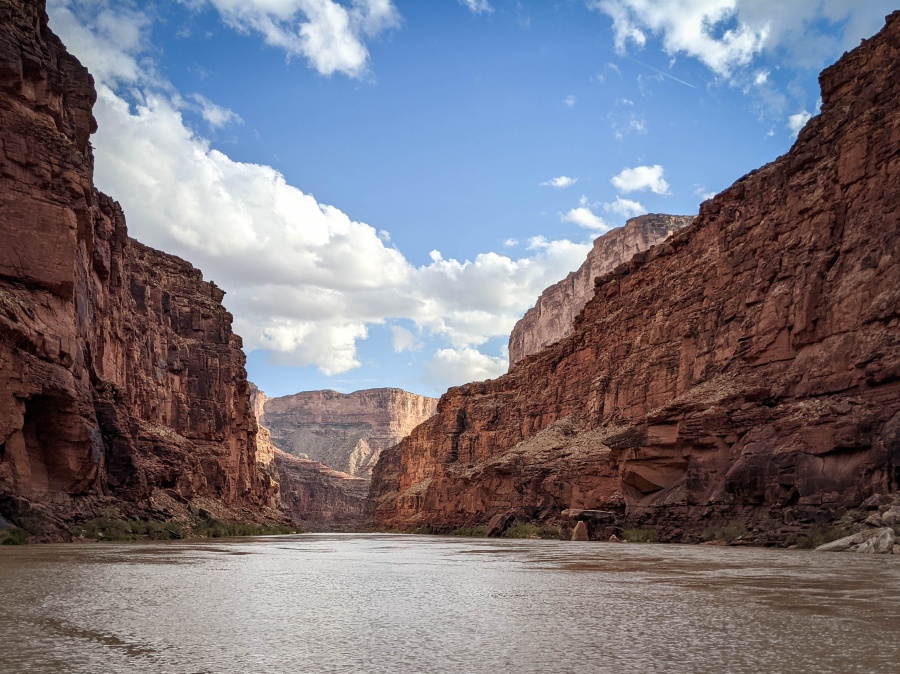
Mindsnap! Georgie White is a classic Grand Canyon character. She swam 60 miles down the river to demonstrate that it was doable in the case of a boating accident, and then opened a company to take paying guests down the river. By using rubber (rather than wood) boats, she was able to dramatically cut costs and make the river more accessible. She was famous for always wearing a full-length leopard-print leotard and having a Coors Lite in hand. She ran river trips up until just before her 80th birthday.

But life was easy, too. Our crew from AZRA took good care of us, and fed us well. The atmosphere in camp was jolly, with some of the guides and guests (including yours truly!) playing songs on guitar, banjo, and violin. Tommy was full of Irish songs - a great new dimension to his general California surfer dude vibe.
Food was ample and tasty, and Bekah, one of the support crew, would read us poems during dinner - about the Grand Canyon and rivers and the hardy folk who venture there. After dinner there was rivercake, a big spoonful of which would be plopped directly into your hands so as not to needlessly dirty any dishes.

The guide lifestyle is tough and demanding, not just on the body and mind of the guide but also on those close to them. Full-time guides spend two weeks at a time on the river, isolated from the outside world, emerge for a few days, and then go back into the canyon. You can imagine the toll this takes on relationships.
One guide told me that there was a time when she didn’t see her boyfriend, also a guide, for 9 weeks straight. One day I took over as guide on her raft during a calm section of the river, and as soon as I sat down she mock-asked me questions she must have heard a thousand times: “So what’s your plan for after guiding? Don’t you want to have kids?” It’s not a job; it’s a lifestyle.

Many young guides and support crew sleep in their cars when not on the river. When one trip is over, they might drive over to Oregon or California, and guide trips there until the job winds blow back in the other direction. In the winter, the dedicated river bum transitions smoothly to a ski bum, continuing the vagabond lifestyle and shredding the gnar.
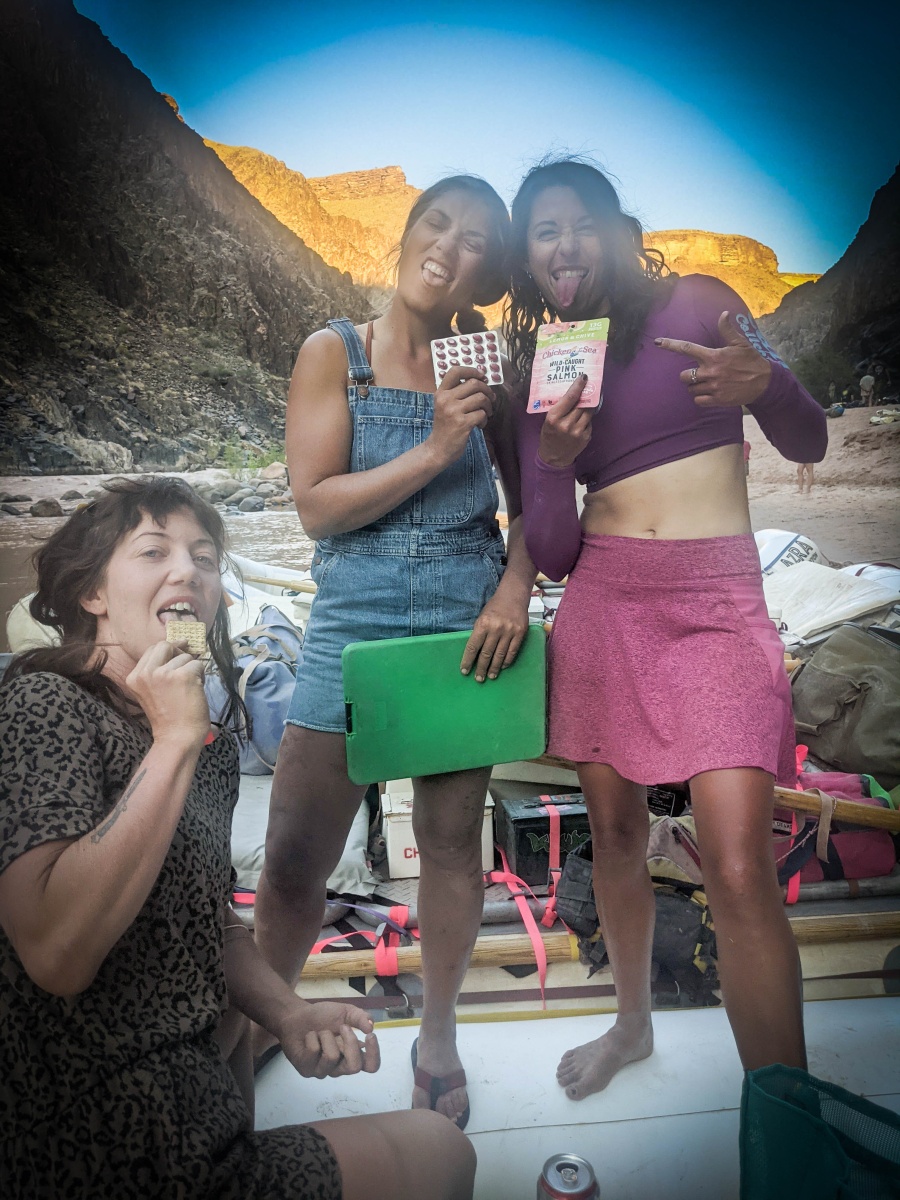
Bekah was one of our support crew. She is half river gypsy, half Amazon, combining prowess on the boat and knowledge of whitewater with the commanding presence of a former drama-club president. She grew up on the Tallulah river, and lovingly refers to the river as “she”, and asks for her blessing and safe passage each morning. During the “roaring twenties” section of the river, Bekah had a quick cry of joy - she’s doing it, living the life she wanted. To her, being a river guide in the Grand Canyon is what being an astronaut is to so many young boys and girls.
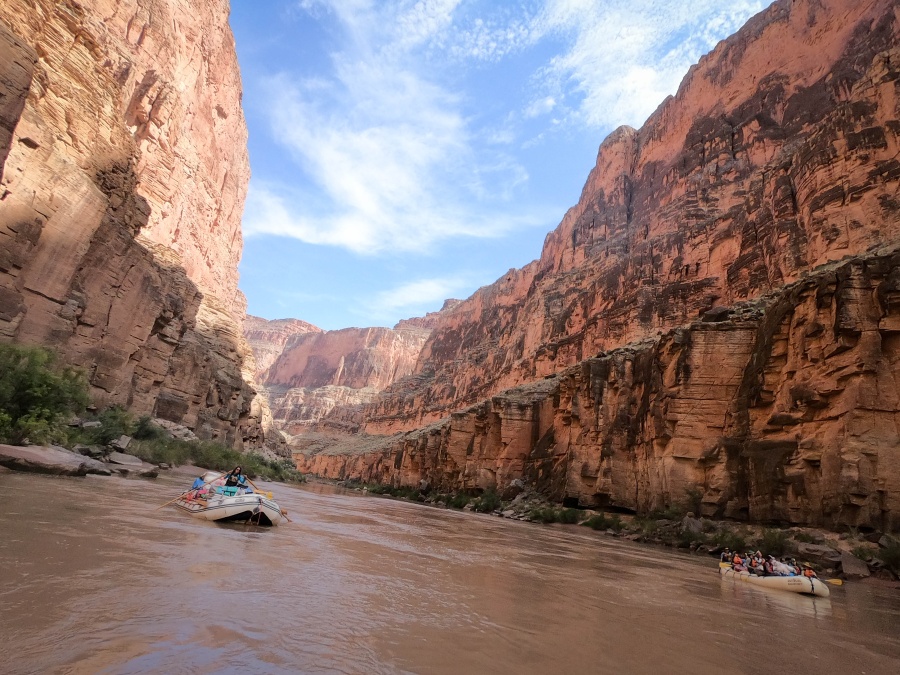
Earlier in life, on the Tallulah River in North Carolina, in Class V+ rapid (translation: only go there if you really know what you’re doing and Danger is your middle name), her boat flipped, and Bekah was sucked into a hydraulic. When in one of those, you look for the light and swim towards it… but there was none - only darkness infinite. Bekah didn’t even know which way was up. She struggled and struggled, until finally she couldn’t. Death was near, she knew. And that was OK with her - this is what she loved, this is what she wanted to do. She made peace with dying.
But somehow, she didn’t die that day. She got out instead, though she still doesn’t know how. And she came out stronger than ever, now with certainty that this was indeed the way she should spend her life. Even if it would ultimately kill her, this is what she loved doing and where she wanted to be.
She ran the same river, including that rapid, again the next day.
How many people do you know who have that kind of conviction in what they’re doing? Would you keep doing what you’re doing if there was a considerable chance that it would kill you?
It’s a rare, beautiful thing.
Kafka said that “The meaning of life is that it stops.” Just maybe, if you keep that in mind, your days will be brighter for it.
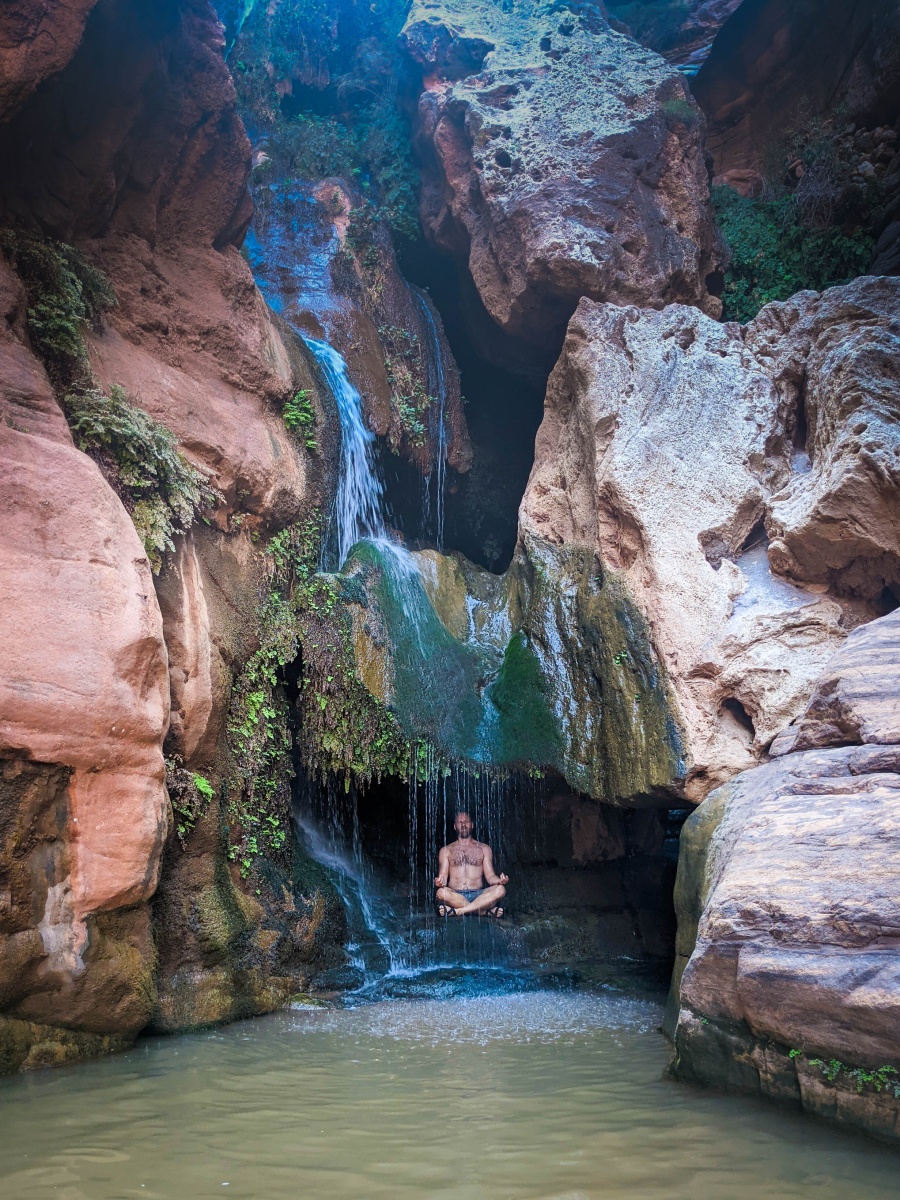
One of my favorite parts of the trip was the complete isolation from the outside world - no cell phones, no internet, no news. My whole universe shrank into the here and now. Boatmen have a saying for that: “Don’t go downstream without your boat.” Worry not about what the future may or may not hold; be here now.
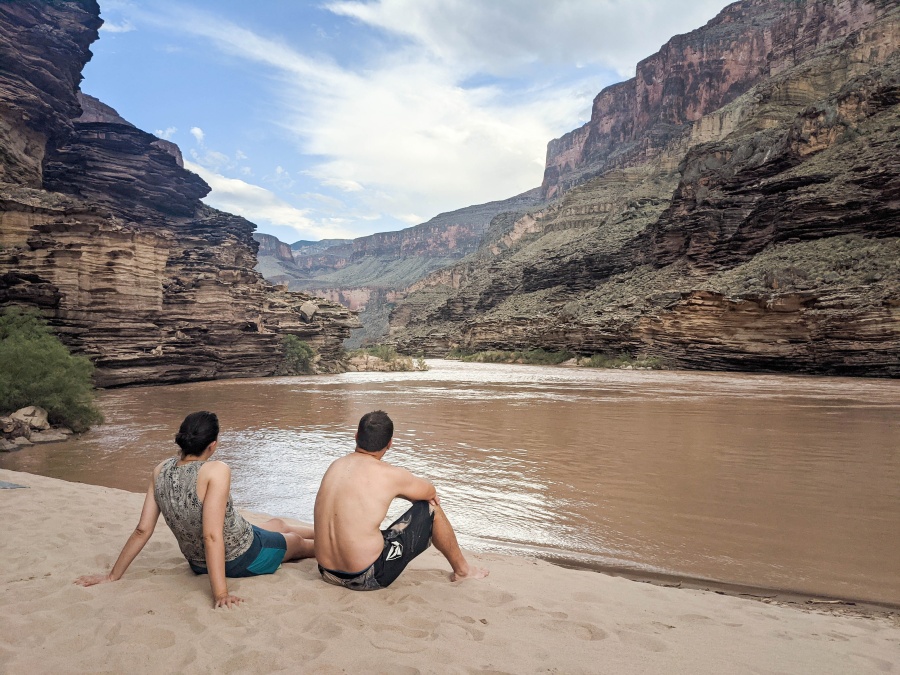
What a beautiful change of pace.
Comments